
 Data Structure
Data Structure Networking
Networking RDBMS
RDBMS Operating System
Operating System Java
Java MS Excel
MS Excel iOS
iOS HTML
HTML CSS
CSS Android
Android Python
Python C Programming
C Programming C++
C++ C#
C# MongoDB
MongoDB MySQL
MySQL Javascript
Javascript PHP
PHP
- Selected Reading
- UPSC IAS Exams Notes
- Developer's Best Practices
- Questions and Answers
- Effective Resume Writing
- HR Interview Questions
- Computer Glossary
- Who is Who
how skin track allows your entire arm to behave like a touch pad for your devices
New era Smart watches are computerized wristwatches whose functionality can go ahead of mere timekeeping. The utility of smart watches are no more limited to just showing the time, rather the recent ones can be handy for tasks such as elementary calculations, manage phone calls, listening music and much more.
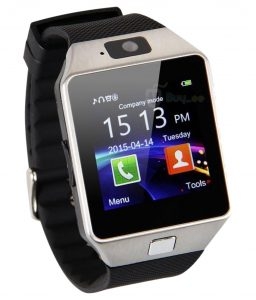
Nowadays, with the advent of a higher version of operating system, the basic purpose of smart watches has taken a paradigm shift. As it can run media players and can play digital audio and video files. It can also assist Bluetooth or USB headset. In fact, the recent watches can be considered as a replacement for a mobile phone as it can perform almost all applications that a normal handset can do.
Dwindling Popularity of Smartwatches
The popularity of the smart watches is mostly limited due to the fact that it has a small screen. Due to this, our interaction level with it decreases. In fact, the size of the screen is so small that, even one of our finger blocks most portion of the screen. In order to address this problem, the scientists have developed a system called skin track system that allows our entire arm to act as a touchpad.
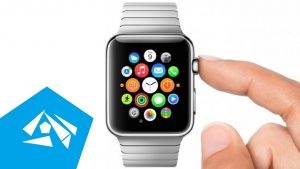
Through this technology, our forearm turns into a touch screen and thereby a much bigger surface can be used for all the operations at ease. Therefore, one of the biggest challenges associated with almost all the smart watches is taken care of through this new breakthrough technology for turning your arm into a screen. And the technology is named as Screen Track.
Skin Track System
The recent Skin-Track system requires only a special ring on your finger being used for tapping, which propagates low amplitude, high-frequency signal through the skin when the finger touches or hovers nears the skin surface. In order to communicate with the signals of this ring, electrodes are placed in the smart watches.
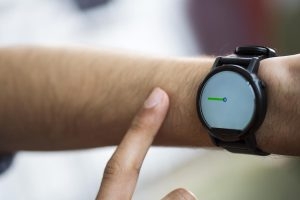
Skin Track system is being considered as a breakthrough in contrast to the earlier approach to convert “skin to screen” that employed flexible overlays, interactive textiles and projector/camera and the combinations was cumbersome.
Overcoming Small Screen Restrictions
Skin Track was first developed by the Human-computer interaction institute’s future interfaces group at the Carnegie Mellon University in Pittsburgh. The scientists are now of the notion that with the Skin Track system is the answer to the restrictions posed by the small screen of smart watches.
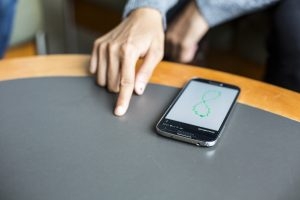
Gierad Laput, part of the research team and a Ph.D. student has said that the main difficulty in using a smartwatch and other digital items are its small screens. And the communication area with the device is so small that our finger blocks most portion of the screen and thereby making it even more difficult for a big person to use such digital jewelry.
To emphasize the advantage of this technology, Yang Zhang, a first year Ph.D. student of Human-computer Interaction Institute has said that this system is not an additional burden as because people are accustomed to wearing rings in their fingers and watches on their wrists. So, if by using a ring one can use a digital device comprehensively then it is a good finding for us.
How Skin Track System works?
The operation of a Skin Track system is also not so very complicated. As the approach is very simple that makes use of the fact that, our skin being a conducting device can be used as a physical waveguide. Thus, Skin-track works on the physical waveguide principle that employs electromagnetic (EM) waves propagating along a physical waveguide like the arm of a human being. The human body is conductive and therefore the arm can be operated as a waveguide for electrical signals.
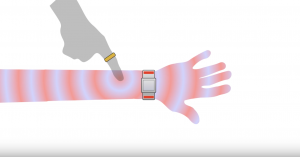
Now to locate the position and movement of the finger wearing the signal emitting ring, 2 sets of electrodes are placed on the face of the smartwatch. A pair of electrodes is placed along 12 O’clock and 6 O’clock position of the watch to detect the movement of the finger along the width of the forearm. And another set of the electrodes are placed along 3 O’clock and 9 O’clock position to show the movement of the finger along the length of the forearm.
The electrode arrangement mentioned above is most sensitive to movement along the y-axis as the width of a forearm is limited to only 6-8cm. However, the sensitivity can be relaxed along the X-axis as the length of the forearm can be up to a couple of inches.
Permittivity of Human Skin is the Key
The design of the watch is based on the following, the skin has an average permittivity of 17 at a frequency of 80MHz, and therefore with the 80MHz frequency, the electromagnetic wave propagates at 7.3×107 m /s. The ring is designed to emit an 80MHz AC signal, which results in a phase difference of ~4° per cm traveled. The main components of a Skin Track system are a signal-emitting ring and a sensing band that is attached to the watch.
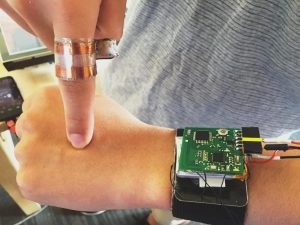
For convenience, a right-handed person will wear the ring on its right hand and watch on its left hand and vice versa. The function of the Skin Track system is broadly two aspects, first the position and the movement of the finger along the forearm and secondly the touching of the finger to the forearm while the selection of an application or function.
The position of the finger along the forearm is ascertained by the electrodes as explained, while the touching of the finger is accomplished by sending an electrical signal to the watch along the skin, while the skin acting as the physical waveguide.
Benefits of Skin-Track Technology
Besides turning you are into the smart-watch screen and resulting in a bigger area to operate your device easily, the Skin Track tech has the following additional advantages, For game lovers, their finger can be used as a joystick. So one can have a totally new experience in playing games.
The Skin-Track can be used as a game controller, to scroll through lists on the smartwatch, to zoom in and out of onscreen maps, and to draw. Through number pad application enable the users to use the back of the hand as a dial pad for the onscreen number pad; hovering a finger over the hand acts as a cursor, highlighting numbers on the screen to aid in targeting touch points.
Easy Mobility of Apps
Applications can be dragged onto the forearm and act like a shortcut. Like mobile phones, one can also shift through the playlist by swiping the finger on the skin. As claimed by the researchers, the technology is found to be safe. As so far, no evidence suggests that the radio frequency signals used by Skin-Track have any adverse effects on the body or the arm. As such, the body is commonly exposed to electro-micro waves from all kinds of daily appliances — and will not be affected by these tiny amounts of current drawn from the finger by touch screens.
Barring all the features and advantages mentioned above this device has limitations too. The ring which we will wear on our finger will generate electricity and it will travel on our body. So, it may not be appropriate for all customers. Another challenge is to power up the Ring as it is not practically possible to put it on recharge on a regular basis. Therefore, this fact of recharging is under consideration and efforts are being made to make use of the movement of the arm and the finger for recharging the Ring.

